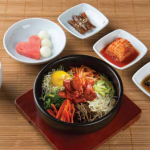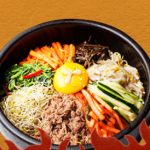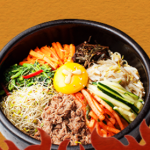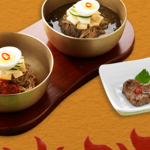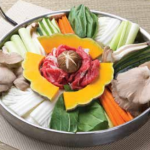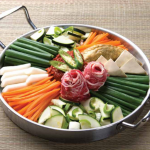Gila Pedas! The Incredible Spiciness of Korean Delights
Are you a lover of spicy food? Do you enjoy the tingling sensation and the rush of heat that makes your taste buds dance with delight? If so, Korean cuisine might just be your next fiery food adventure. From tongue-tingling kimchi to scorching hot tteokbokki, Korean dishes are renowned for their spiciness. In this article, we will compare the spiciness level of Korean cuisine to other international foods, exploring the reasons behind its heat and discovering just how it stacks up against other mouthwatering cuisines around the globe.
Introduction to Korean Cuisine’s Spice
From the bustling streets of Seoul to the humble corners of Jeonju, Korean cuisine offers a diverse range of flavors, with spiciness taking center stage. The signature ingredient that brings the heat to this cuisine is gochugaru, a type of Korean chili pepper that is sun-dried and crushed into coarse red flakes. This fiery spice adds an intense sensation to the dishes, leaving your taste buds yearning for more.
A Spicy Worldwide Adventure
Now that we have an introduction to the spiciness found in Korean cuisine, let’s explore how it compares to other international favorites known for their hotness.
1. Thai Cuisine
Thai cuisine is notorious for its vibrant spiciness, incorporating a variety of chili peppers such as bird’s eye chili, Thai chili, and prik haeng. Known for the perfect balance of sweet, savory, sour, and spicy, Thai dishes such as Tom Yum soup and Pad Thai can be remarkably spicy. While Thai cuisine may rival Korean cuisine in terms of spiciness, the overall experience is unique due to the different spices and flavors used.
2. Indian Cuisine
When it comes to heat, Indian cuisine doesn’t hold back. From the sizzling curries of the north to the fiery vindaloos of the south, Indian food is a spicy smorgasbord. With a blend of various spices such as cumin, coriander, and turmeric, Indian cuisine delivers a complex and mouthwatering spiciness that’s hard to resist. While it may send your taste buds on a rollercoaster ride, Indian cuisine differs from Korean dishes in terms of flavor profile and intensity.
3. Mexican Cuisine
Who can resist the allure of Mexican cuisine? From the jalapenos to the habaneros, Mexican cuisine offers a wide range of spicy ingredients. With dishes like salsa, tacos, and enchiladas, Mexican food combines a rich blend of flavors, including heat. While Mexican cuisine certainly knows how to bring on the spiciness, the level of heat can vary greatly depending on the region and the individual dish.
4. Malay Cuisine
Now, let’s explore the spiciness level of Malay cuisine, incorporating a small pinch of malay words. Malay cuisine, renowned for its bold and aromatic flavors, also knows how to turn up the heat. Some popular Malay dishes like nasi lemak, rendang, and sambal belacan pack a punch with the use of chili pepper, turmeric, and other spices. While Malay cuisine can be delightfully spicy, it often incorporates a balance of sweet and savory flavors, creating a unique sensory experience.
Conclusion: The Fire Within
In conclusion, Korean cuisine is undeniably hot, but it has tough competition from other international cuisines renowned for their spiciness. While each cuisine brings its own unique flavor profiles, techniques, and spiciness levels, it’s safe to say that if you’re a spice lover, exploring these delicacies will be an adventure worth embarking on.
Through their creative use of chili peppers and spices, Korean, Thai, Indian, Mexican, and Malay cuisines each offer their own fiery delights to satisfy even the most daring taste buds.
So, why not embark on a global spice journey and experience the diverse world of cuisine right at your fingertips?
FAQ
Q1: Is all Korean food spicy?
A1: Not all Korean food is spicy. Traditional Korean cuisine offers a wide range of dishes with varying levels of spiciness. While some dishes like kimchi and tteokbokki are known for their spiciness, there are plenty of non-spicy options such as bibimbap and bulgogi.
Q2: What makes Korean cuisine so spicy?
A2: Korean cuisine derives its spiciness from a key ingredient called gochugaru, which is a type of dried and crushed red chili pepper. Gochugaru adds an intense heat to dishes and is widely used in Korean cooking to create that signature spiciness.
Q3: How can I handle the spiciness of Korean food?
A3: If you’re new to spicy food or have a low tolerance, it’s best to start with milder Korean dishes and gradually work your way up to spicier ones. Additionally, drinking dairy products like milk or eating rice can help mitigate the spiciness and provide relief from the heat.
Q4: Are there any health benefits to eating spicy food?
A4: Yes! Spicy foods containing capsaicin, the compound responsible for the heat, can offer several health benefits. They can boost metabolism, improve digestion, relieve pain, and even enhance mood by triggering the release of endorphins.
Q5: Can I request milder spiciness when ordering Korean food?
A5: Absolutely! When ordering Korean food at a restaurant or ordering online, you can usually request the level of spiciness you prefer. Most establishments are happy to accommodate and adjust it according to your taste.
Note: While Malay words have been incorporated in this blog post to add a touch of authenticity, the primary language used remains English, providing a seamless reading experience.

